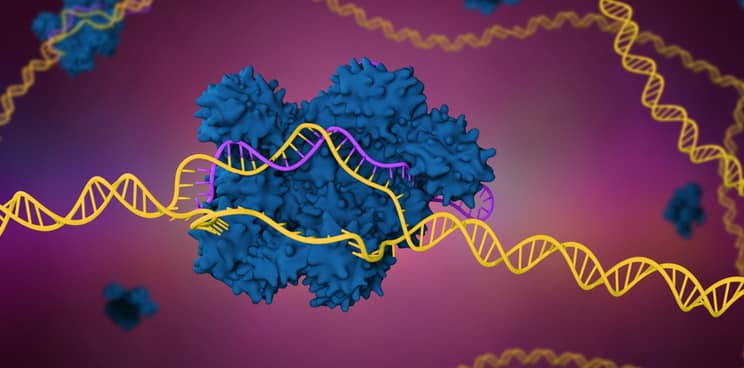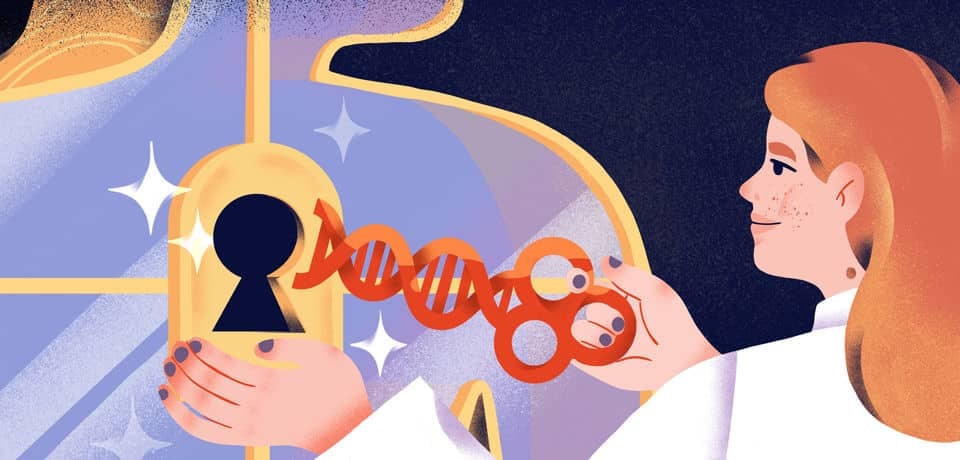Newsletter Signup - Under Article / In Page
"*" indicates required fields
Gene editing has come far in the past decade. However, the field is still finding its feet regarding challenges such as drug delivery, regulation and competition with first-generation gene therapies.
Gene editing is a sizzling hot topic in the biotech industry, powered by advances in genetic tools such as CRISPR, TALENs and zinc-finger nucleases. Gene editing biotech players are developing ways to harness the technology to correct mutations that lead to genetic diseases.
“The promise of gene editing is so amazing,” said Devyn Smith, CEO of the gene editing company Arbor Biotechnologies. He added that much of the interest in the technology is its potential to not just treat diseases, but to cure them.
The most advanced CRISPR-based cell therapies have already reached late-stage clinical testing. This includes exa-cel developed by CRISPR Therapeutics and Vertex Pharmaceuticals for the treatment of the blood disorders sickle cell disease and transfusion-dependent beta thalassemia. The treatment involves extracting a patient’s stem cells from the blood, gene editing them to let them carry more oxygen, and reinfusing them.
Despite the promising progress of gene editing technology in gene and cell therapies, there is much untapped potential. For example, of the thousands of rare diseases in existence, only 5 percent are estimated to have an approved treatment.
Smith and a group of industry experts discussed current directions in gene editing in a session at the 2022 Cell & Gene Meeting on the Mesa in October 2022. Moderated by Tim Farries, principal consultant and senior director of the consulting firm Biopharma Excellence, the group also covered challenges to the technology, including delivering the therapy, the market space and liaising with regulators.
Gene editing versus traditional gene therapies
Traditional gene therapies have been in development for decades, and typically involve the delivery of a therapeutic gene to a patient via a viral vector. In contrast, gene editing therapies are designed to tweak the DNA that is already in a patient. This might involve deleting and adding bits of DNA, or a flexible mixture of both.
Earlier generations of CRISPR-based therapies are limited to tweaking cells removed from the patient and reinfused, referred to as an “ex vivo” model. Newer so-called “in vivo” candidates are in development to be delivered directly into the patient like a gene therapy, and could permanently correct mutations in a patient’s DNA.
One limitation of traditional gene therapy is that it is most effective in tissue where cells aren’t dividing and reproducing themselves, like nerve cells in the brain. Meanwhile, CRISPR-based edits to the genome can be transmitted to new generations of cells, so gene editing therapies can be used in tissues with a higher turnover rate, such as the liver in young children.
“You are almost dependent on being able to go in and correct the cell at the DNA level in order to get that long term durability,” said Albert Seymour, president and CEO of Homology Medicines.
Safety and regulations for gene editing
As the gene editing space is still very new, there are many unknowns regarding the safety of the technology.
“As we push new technologies into rare disease areas where they haven’t been, there isn’t much of a precedent,” noted Mark Shearman, CSO of the firm Editas Medicine.
In the last year, LogicBio faced its own safety issues in a phase 1/2 trial in children with the life-threatening disorder methylmalonic acidemia. The firm recorded two cases of serious side effects known as thrombotic microangiopathy, leading the U.S. Food and Drug Administration (FDA) to put a clinical hold on the trial. The FDA eventually gave LogicBio the go-ahead again in May 2022.
“Unfortunately, we faced some safety issues in one of our clinical trials,” said Fred Chereau, president and CEO of LogicBio. He added that it is reassuring when companies communicate with each other at events and share how they can overcome these issues.
Another key point was that the field is so early-stage that gene editing companies must stay in close contact with the FDA to navigate the shifting regulatory scene and learn from each other.
The onus will also be on the regulatory agencies to determine what the safety threshold will be for gene editing therapies. For example, demanding data on very rare adverse events like off-target edits might sometimes be counter-productive.
“If it’s a one-in-a-billion event, but yet you’re having a hundred double strand breaks in every cell in your body every single day, at some point it is in the realm of silliness,” said Smith.
Investor and payer attitudes to gene-edited therapies
Gene editing technology is seen as a new, shiny object in the greater landscape of gene and cell therapy investments. This has led to some impressive funding rounds backing gene editing players, with one example being Arbor Biotechnologies’ $215 million Series B round in November 2021.
Additionally, in spite of the gloomy outlook in public biotech markets, gene editing players have been spared the worst of the uncertainty.
“The valuations have held up remarkably well considering what’s happened in the market,” said Smith. “Investors get it, but I think it’s incumbent on all of us in this space to continue to execute and hopefully generate that positive clinical data so that momentum continues.”
However, there are headwinds for investors in the gene editing space to come. The emerging field needs to answer many questions regarding safety, monitoring the technology and manufacturing.
In addition, the way that gene editing therapies will be paid for is currently unclear. Companies developing traditional gene therapies such as Orchard Therapeutics and bluebird bio are currently blazing a trail. Their ongoing negotiations with payers in multiple nations demonstrate how difficult it is to set a fair price for their potentially life-saving products.
Smith sees this dilemma as one ripe for new ideas.
“You’re starting to see hints of this, where someone’s going to figure out how to innovate in this space on the payer side and be wildly successful,” said Smith, adding that future pioneers could “completely upend the way we are doing things.”

From rare diseases to bigger indications
One reason that gene editing companies treat rare diseases is that their target indications in this camp are often caused by a single mutation that can be corrected easily. However, once the technology advances, the companies can begin to expand to treat diseases with more patients, but that have more complicated genetic underpinnings.
“There are companies within the gene editing space that are swinging for the fences and they’re going after common cardiovascular disorders, for example,” said Shearman.
However, more common diseases such as cancer will take a lot more study, as the genetic factors driving the disease are much less clear.
“We don’t yet have a broad handle on the underlying genetics,” noted Smith. “Alzheimer’s disease is probably not one disease; it’s probably 55 small diseases each having different genetic drivers.”
Additionally, the question of reimbursement will need to be addressed when gene editing is applied to common indications affecting a million patients or more. As the first antibody treatments get approved for slowing down Alzheimer’s disease, this will be watched closely by the gene editing community as a case study on how to decide the pricing strategy in this very common indication.
In vivo: how to deliver the therapy into the body
As more and more gene editing companies develop in vivo approaches, the question of how to deliver the gene editing machinery to where it needs to go in the patient’s body opens up. Additionally, designing the gene editing machinery to work in human cells makes it tough to test them in animal models first.
“There are no preclinical models that you can use to predict what you might see clinically,” said Seymour. “That’s a big challenge.”
Many companies are using viral vectors to get the gene editing tool into the patient’s body. However, great control is required to make sure that the editing only happens in the tissue of interest. For example, Editas is using cell type-specific “promoter” regions in its therapy to make sure the genetic material is only expressed in the correct cells.
Other challenges for delivering in vivo gene editing therapies will be making sure that the immune system doesn’t attack the therapy and blunt its effects. Another will be crossing the blood-brain barrier to treat conditions in the central nervous system.
According to Chereau, there has been massive progress in the development of gene therapy vectors, such as viral vectors and the emergence of RNA therapies that can be delivered in lipid nanoparticles. However, it will still take time to find ways for these therapies to cross from the blood into the brain.
Gene editing will find its niche
There is a tradeoff developing for gene editing players as traditional gene therapies gain momentum. If the early generations of gene therapy could theoretically cure rare diseases, would that leave less room for the gene editing players to shine?
The trick will be for gene editing companies to carefully select indications that are less covered by the competition, or to find their edge over traditional gene therapy. For example, traditional gene therapy might suit adult patients with hemophilia, whereas gene editing might be better for younger patients with the same disease.
“Are we to the point where we can cure every disease out there? No,” stated Smith. “It’s a journey, but you’re seeing a lot of great progress.”






